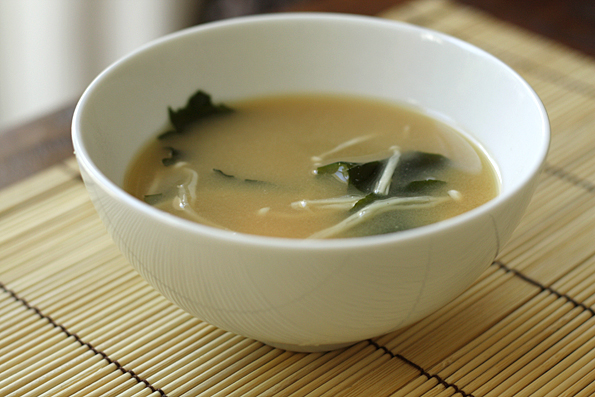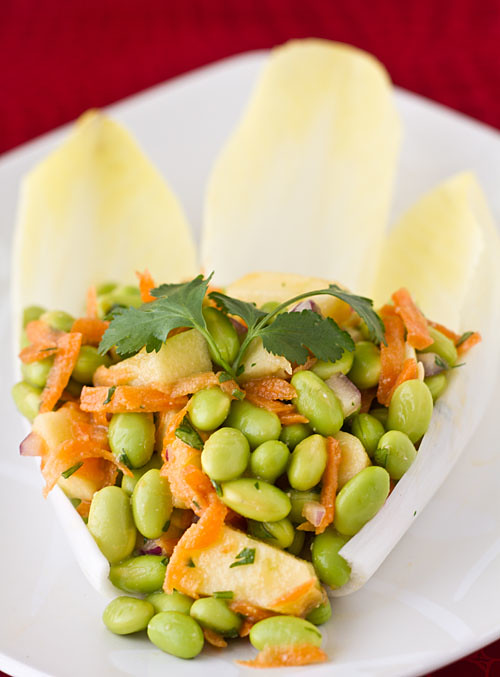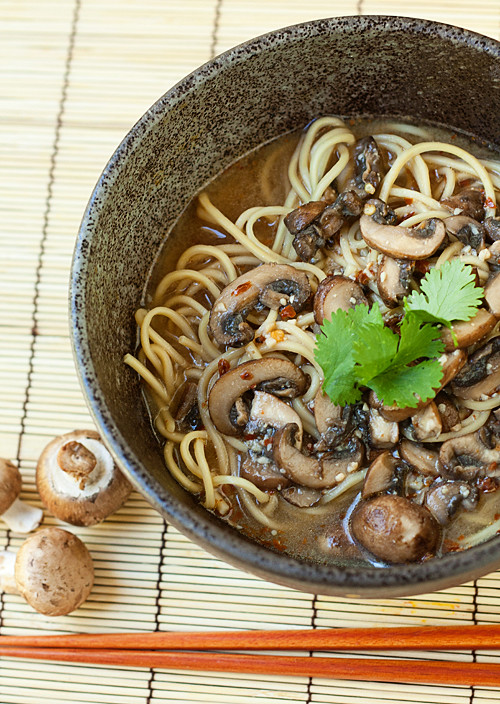Podcast: Play in new window | Download (Duration: 28:44 — 26.3MB)
Have you entered our Zojirushi rice cooker giveaway yet? If not, don’t forget to head on over and enter!
Miso. It’s about time we talked about it… it is a part of our podcast’s name, after all!

Alright… so we know miso is important in Japanese cooking. But what exactly is it?
Fermented soybean paste.
Which sounds absolutely delicious, doesn’t it? (We promise, it tastes a lot better than it sounds.) ~_^
History
Miso has been around for a pretty long time. (Not quite as long as rice, but still quite a while!)
It originated in China around 800 BC, and was brought to Japan with Buddhism around 500 AD.
According to ancient Japanese mythology, miso was a gift from the gods. (We think that’s pretty darn cool.)
How it is made
Until recently, soybeans would be cooked, crushed and made into balls the size of ostrich eggs, then tied with straw ropes and hung up to grow a natural mold. The moldy balls would then be mixed with salt and water to make miso paste. This method is pretty rare nowadays.
In the more modern, but still traditional method, cooked soybeans are mixed with koji (grains or beans inoculated with Aspergillus culture), salt, and water. This mixture is placed in old cedar casks to naturally ferment at room temperature for up to 2 years, depending on the type of miso.
Gradually, enzymes supplied by the koji, along with microorganisms from the environment, break down the complex structure of beans and grains into readily digestible amino acids, fatty acids and simple sugars.
By varying the type of koji used (usually rice, barley or soybean) and the proportions of ingredients in the recipe, traditional makers are able to create a wide range of misos, from and sweet to dark and robust.
The very modern process employs accelerated temperature-controlled fermentation in plastic or stainless steel holding tanks. The rice and salt used in the commercial method are often processed and have less nutritional value.
In terms of the different ingredients that can be used, there are 4 basic varieties of miso:
- Kome miso (rice miso): accounts for about 80% of total domestic production. It’s made from boiled, crushed soybeans mixed with a culture called koji, made from rice. Salt is added and the moldy mixture is left to mature for 6 months to 3 years.
- Mugi miso: made with soybeans, wheat or barley, koji and salt, and is sometimes called inaka miso, meaning “country miso,” as it is the variety often made by farmers in the countryside.
- Mame miso: Made with soy beans, koji, and salt alone
- Chogo miso: Blended and seasoned with different flavorings
How does miso look, and what does it taste like?
The color of miso ranges from light cream to almost black. In regular grocery stores, you’ll often see “white” or “red” miso – white is a light beige color (definitely not a true white) and is the milder of the two, and red is sort of a reddish-brown color, and is much stronger.
In Asian supermarkets, you can often find many more varieties, ranging from very light, to very dark – almost black-colored.
In general, the lighter the color the less salty the miso. Darker-colored misos are much stronger, and definitely considerably saltier (so you want to make sure to use very small amounts in your cooking so as not to overdo it!)
All miso has a distinctive fermented-bean flavor and aroma.
Sweet/short-term miso is light in color (beige or yellow) and high in carboyhydrates. It ferments in just two to eight weekds, depending on the exact recipe and temperature of aging.
Long-term miso, is darker in color and saltier in taste. It must be fermented longer, usually at least one summer, but as long as two to three years in very cold climates.
Alrighty. So how do you buy miso?
Here in the West, miso is sold either in plastic packaging or in plastic containers.
When shopping for miso, look for the words “traditionally made” or “naturally aged” on the package. The finest quality misos are also made from 100% organic ingredients and sun-dried sea salt. Look for the word “organic” on the front of the packaged and check the ingredient list for sea salt.
Unpasteurized miso, which is usually stocked in the refrigerator, is generally preferred to pasteurized miso, which is sold in unrefrigerated sealed plastic bags. However, there are several excellent Japanese-made, pasteurized misos that are sold in natural foods stores.
In “normal” grocery stores, look for it in the “foreign foods” refrigerated section – near the wonton wrappers and tofu.
Miso should be firm, not wet or runny. It should have a thick consistency, almost peanut butter-like. Refrigerated miso should not have a strong alcohol smell—this usually indicates that it was not manufactured or shipped properly. If it’s growing things or smells “off”, toss it.
But in general, when stored properly, miso keeps for a very long time in an airtight container in the refrigerator.
Great miso health benefits include…
Even today in some parts of Japan, drinking miso soup every day is associated with a long, healthy life.
It’s a very healthy food — a good source of essential amino acids and some vitamins and minerals, and low in calories and fat. Miso has also been found to be effective in lowering high blood pressure and cholesterol… and it helps the liver cope with alcohol and nicotine, so it’s a great hangover cure.
Some research even suggests that miso wards off cancer – Shinichiro Akizuki, M.D., director of St. Francis Hospital in Nagasaki during World War II, spent years treating atomic bomb victims just a few miles from ground zero. Neither he nor his staff suffered from the usual effects of radiation. Akizuki hypothesized that he and his associates were protected from the deadly radiation because they drank miso soup every day.
Then, in 1989, Professor Ito at Hiroshima University’s Atomic Radioactivity Medical Laboratory found that the liver cancer rate was 100 to 200% higher for rats that were not fed miso and then radiated, than that of rats that were fed miso. Rats fed with miso also had much less inflammation of the organs caused by radioactivity.
So… how do you eat miso?

Miso soup! (Obviously.) (You can also add fishclams, or even butternut squash to your miso soup!)

Dissolved in dashi to make soup (like in this shiro miso ozouni)

Added to simmered dishes and hot-pots.
Used as a marinade for tofu, fish, and meat.
Used to make dressings. (This edamame salad with miso dressing sounds amazing.)

Lighter misos, or blends of light and dark misos, are good for summer soups, dips, spreads, sauces and salad dressings.
Darker misos are good for winter soups, stews, and sauces.
Cooking with Miso
Don’t overpower dishes with a strong miso taste. Using miso is about subtlety… integrate the miso to create a gentle balance with other ingredients. Experiment with silken tofu, mellow miso and lemon or rice vinegar to make creamy dips and spreads.
When using in soups, miso should be added near the end of the cooking time. Miso may be briefly simmered, but not boiled. Boiling alters the fresh miso flavor, causes a grainy texture, and destroys beneficial enzymes and microorganisms. (In other words, try not to have leftover miso soup. If you reheat it, it becomes downright nasty!)



